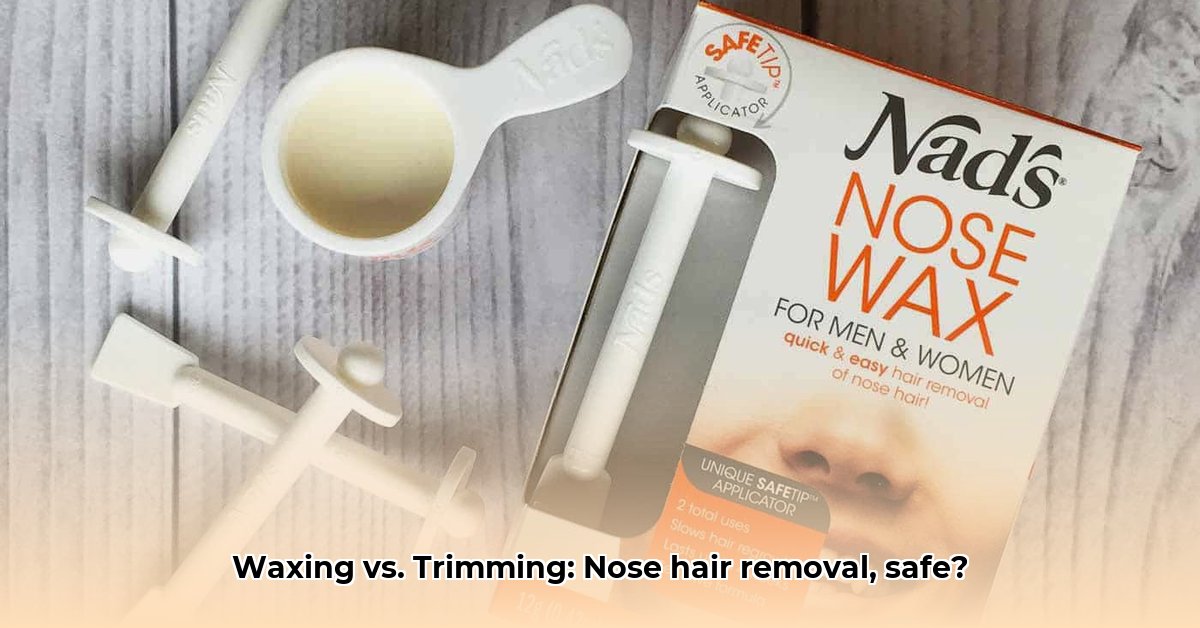
Benefits of Waxing Nose Hair: A Critical Look
Many believe waxing offers superior nose hair removal, promising longer-lasting results and finer regrowth. However, a critical analysis reveals this claim lacks robust scientific backing. While waxing might initially provide a longer period without visible hair, there's no guarantee of finer or less noticeable regrowth. In fact, the potential risks significantly outweigh any minor cosmetic advantages.
Debunking the Claims: Waxing's Promises Under Scrutiny
The assertion that waxing leads to longer-lasting smoothness and finer hair lacks strong scientific evidence. While temporary smoothness might occur, the claim of finer regrowth is unsubstantiated. This perceived benefit is far outweighed by the significant health risks associated with the procedure.
The Risks of Nose Hair Waxing: A Comprehensive Assessment
Waxing the nose carries considerable risks due to the sensitivity of the nasal passages. The nasal lining is delicate and vulnerable to infection and irritation. Introducing wax, a potentially germ-laden substance, into this sensitive area increases the risk of complications.
| Factor | Nose Hair Waxing | Nose Hair Trimming (Scissors/Electric Trimmer) |
|---|---|---|
| Infection Risk | High (increased risk of bacterial entry) | Low |
| Irritation | High (potential for burning, redness, inflammation) | Low (minimal discomfort with careful technique) |
| Pain | Moderate to High | Minimal to None |
| Ingrown Hairs | High | Low |
| Long-Term Effects | Potential scarring, recurring infections | Typically none |
| Cost | Moderate to High | Low |
| Convenience | Moderate | High |
Infection is a primary concern. Folliculitis (inflammation of hair follicles) is a real possibility, potentially leading to scarring or persistent inflammation. The risk of more serious infections necessitates a cautious approach. Is a slightly extended period between hair removal worth risking a potentially severe infection or permanent scarring? We believe the answer is overwhelmingly no.
Safer Alternatives: Trimming for Safe and Effective Nose Hair Removal
Trimming emerges as the superior method for nose hair removal, offering safety and efficacy. It's a quick, easy, and gentle alternative.
How to Trim Your Nose Hairs Safely and Effectively: A Step-by-Step Guide
- Choose the Right Tool: Opt for an electric nose hair trimmer with a safety guard or small, rounded-tip scissors. Avoid sharp instruments.
- Gentle Insertion: Gently insert the trimmer or scissors into your nostrils. Avoid forceful insertion. Short, controlled movements are crucial.
- Precision Trimming: Trim only visible hairs; avoid pulling or tugging. Aggressive trimming can irritate the nasal lining.
- Post-Trim Cleaning: Use a tissue to remove any loose hairs.
The advantages of trimming are clear: safety, ease of use, and affordability. It requires minimal skill and inexpensive tools, significantly reducing the risk of injury and infection.
Should You Wax Your Nose Hairs? A Definitive Answer
The purported benefits of waxing nose hair are far outweighed by the substantial risks. Trimming provides a safe, effective, and convenient method to manage nose hair with minimal risk. Prioritize your health and well-being—choose trimming!
Maintaining Nasal Health: The Importance of Nose Hairs
Remember, nose hairs serve a crucial function: filtering air and protecting your nasal passages. Removing them unnecessarily weakens your natural defenses against irritants and pathogens. Preserving these natural filters is essential for maintaining respiratory health.
Key Takeaways:
- Waxing and tweezing nose hair pose a significantly higher risk of infection and irritation than trimming.
- Trimming is the safest and most recommended method for nose hair removal.
- Proper trimming technique with appropriate tools minimizes the risk of injury or irritation.
- Nose hairs play a key role in filtering air and protecting the nasal passages. Unnecessary removal weakens these natural defenses.